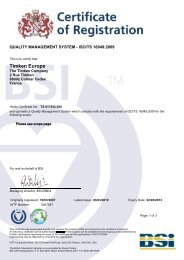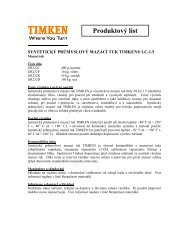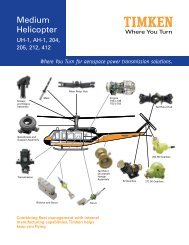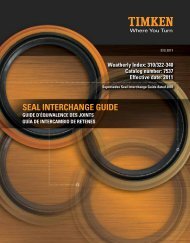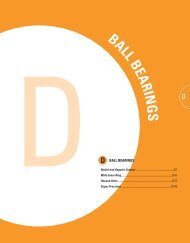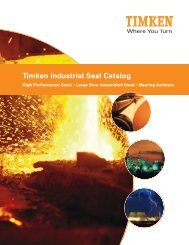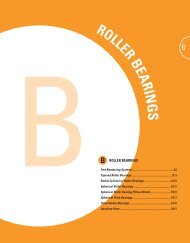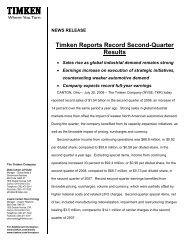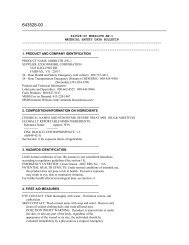You also want an ePaper? Increase the reach of your titles
YUMPU automatically turns print PDFs into web optimized ePapers that Google loves.
TIMKEN SELF-LOCKING<br />
COLLAR INSTALLATION<br />
Most <strong>Timken</strong> housed units come<br />
equipped with the self-locking collar<br />
to facilitate the mounting of wide<br />
inner ring bearings. This self-locking<br />
collar eliminates the need for locknuts,<br />
washers, shoulders, sleeves, and<br />
adapters.<br />
The locking collar has a counterbored<br />
recess made purposely eccentric to the<br />
bore. The collar recess and the end<br />
of the bearing inner ring with which it<br />
engages are both machined so that they<br />
act as mating cams when on the shaft.<br />
When the collar is engaged to the<br />
inner ring, it grips the shaft tightly with<br />
a positive binding action that increases<br />
with use. No adjustments of any kind<br />
are necessary.<br />
CONCENTRIC COLLAR<br />
For simplified installation of <strong>Timken</strong> housed units equipped<br />
with concentric collar bearings, the collar is normally assembled<br />
to the wide inner ring for shipment. Slip the complete unit on the<br />
shaft following steps 1 and 2 described for the self-locking collar<br />
procedure, and tighten both setscrews.<br />
Housed Units<br />
1 . Slip the shaft through the pillow block or other<br />
<strong>Timken</strong> housed unit incorporating the wide inner<br />
ring bearing. Be certain the bearing is aligned<br />
in position along the shaft to eliminate any<br />
possibility of cramping loads.<br />
2 . Fasten the unit securely to the base using the<br />
proper bolt size.<br />
3 . Place the self-locking collar on the shaft with<br />
its cam adjacent to the cam on the end of the<br />
bearing’s inner ring. The eccentric recessed cam<br />
will slide over and engage the corresponding<br />
cam on the bearing inner ring. Turn the collar in<br />
the direction of shaft rotation.<br />
4 . Using a lightweight hammer and a drift pin<br />
inserted in the drift pin hole strike in the direction<br />
of shaft rotation to positively engage the collar.<br />
The wide inner ring is now locked to the shaft.<br />
5 . As a final step, fully tighten the setscrew. It exerts<br />
a wedging action to hold the collar always in the<br />
engaged position, even under shock load. This<br />
design will operate effectively after the cams are<br />
tightly locked in most cases with no setscrews<br />
at all.<br />
TIMKEN SETSCREW LOCKING BEARING<br />
Steps 1 and 2 can be repeated from the self-locking collar<br />
installation above. To lock the setscrew bearing, simply tighten<br />
each inner ring setscrew to the suggested torque listed by shaft<br />
size. See chart below.<br />
SUGGESTED<br />
Shaft Size (in.) mm Torque in lbs. (n • m)<br />
1 /2 - 11 /16 17 mm 35 in lbs. 4 (n • m)<br />
3 /4 - 1 20-25 mm 80 in lbs. 9 (n • m)<br />
1 1 /16 - 1 3 /4 30-45 mm 155 in lbs. 18 (n • m)<br />
1 13 /16 - 2 3 /16 50-55 mm 275 in lbs. 31 (n • m)<br />
It may be necessary to rotate the shaft to provide an easy<br />
access of the setscrew wrench to the setscrews. To disassemble,<br />
loosen the setscrews.<br />
TIMKEN PRODUCTS CATALOG D79<br />
•<br />
AD<br />
A



